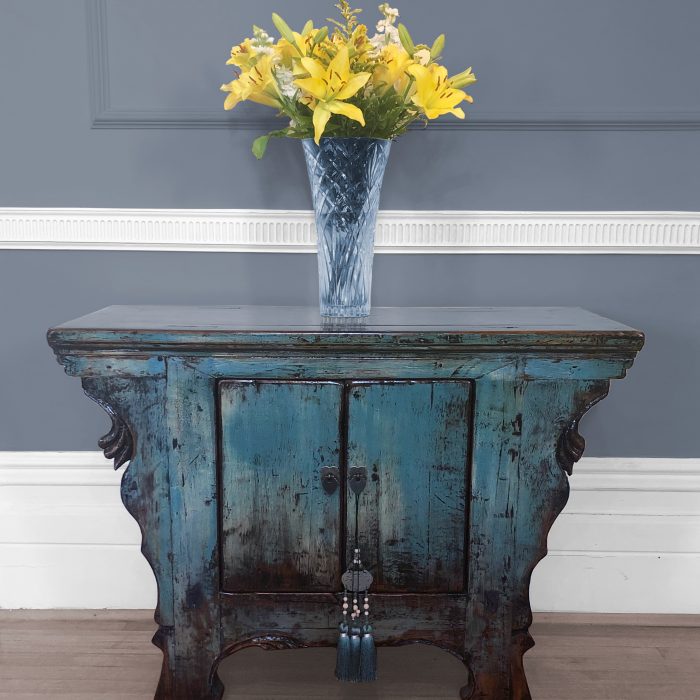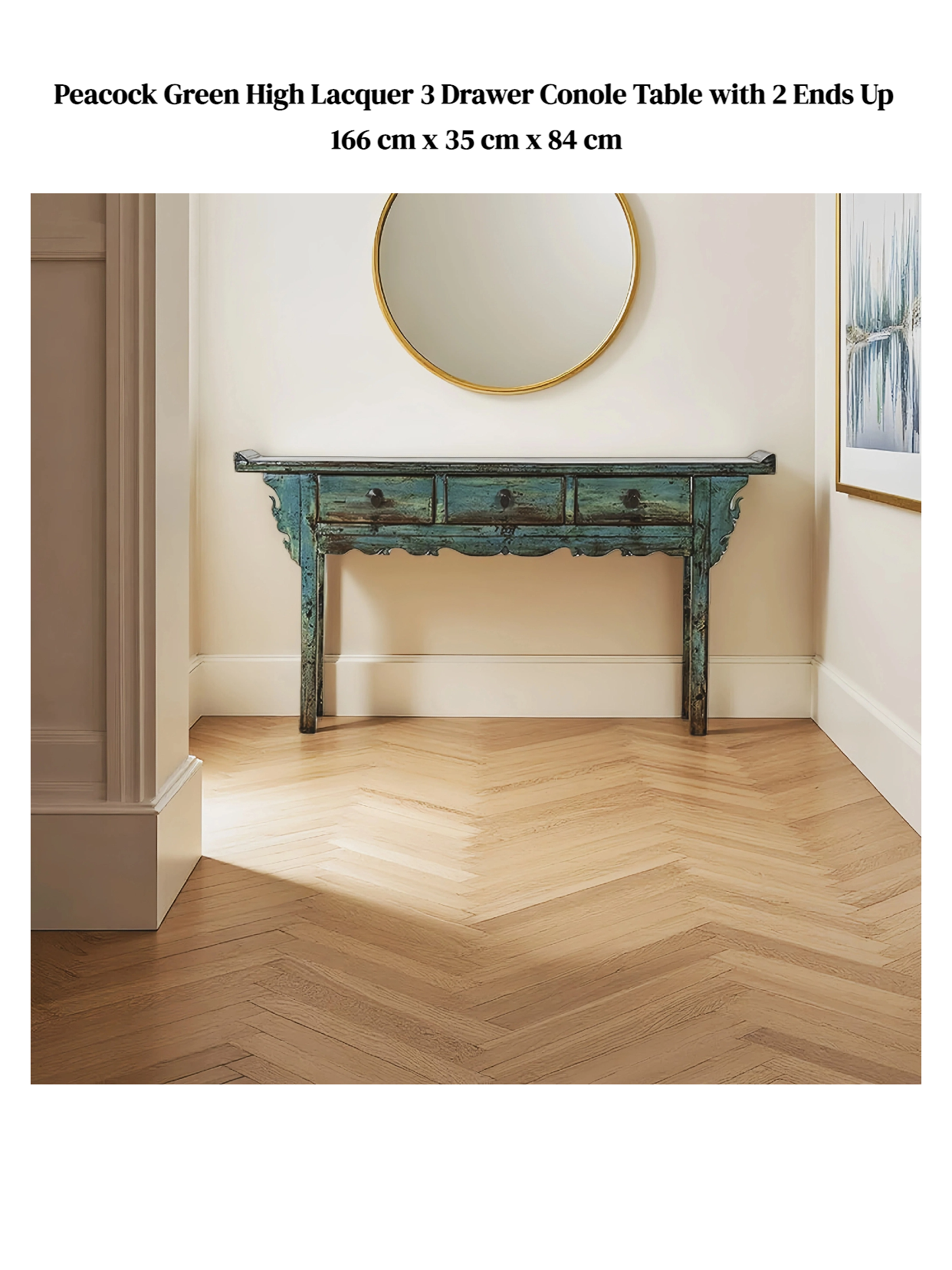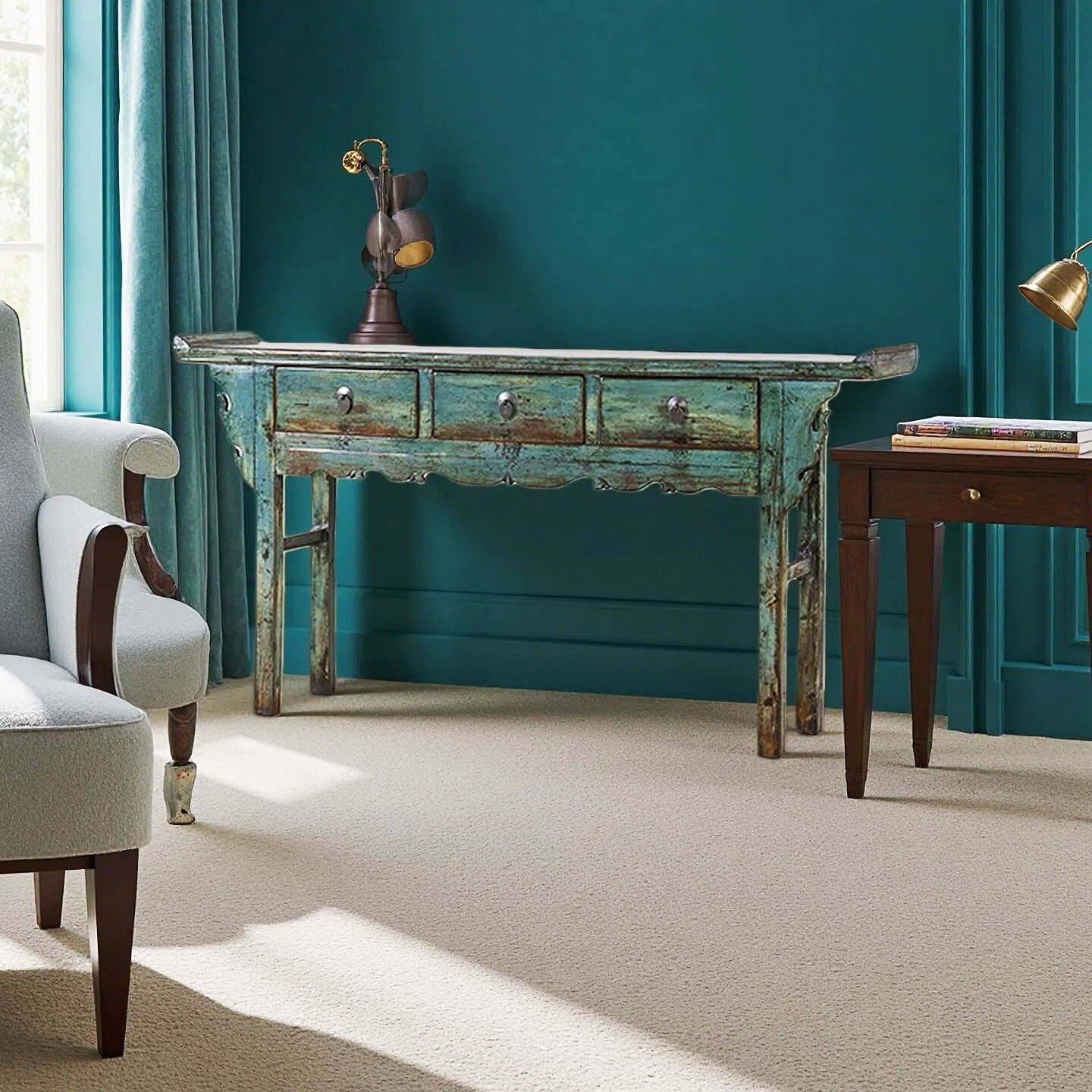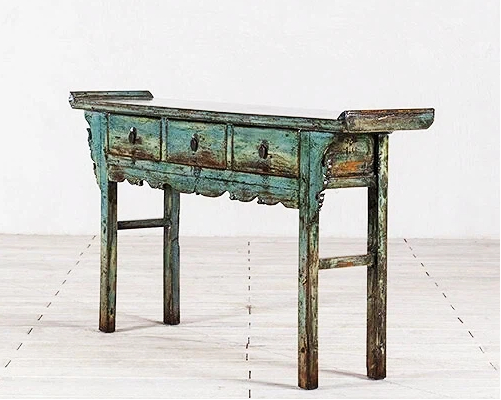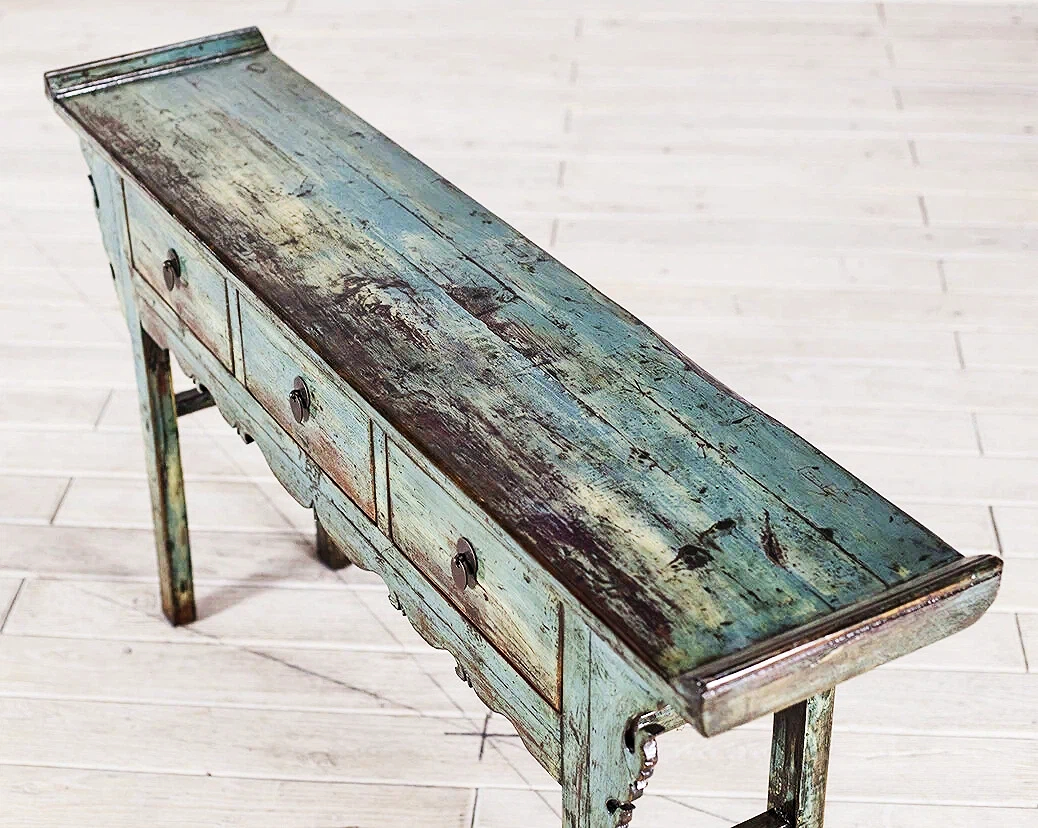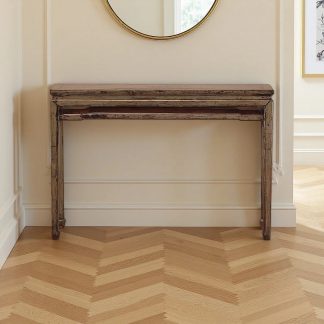Description
About
Inspired by the ancient Chinese Tiao An (Narrow Table), this elegant peacock green high-lacquer console table has been restored with a modern high-lacquered finish.
The Tiao An (条案): A Symbol of Culture and Refinement
The Tiao An, often translated as “Long Narrow Table” or “Altar Table,” is one of the most iconic and culturally significant forms in traditional Chinese furniture. Its history is deeply intertwined with Chinese social customs, architecture, and aesthetics.
-
Roots in Ritual (Pre-Ming Dynasties): The conceptual origins of the Tiao An can be traced back to ancient China, where elevated platforms and tables were used in ancestral temples and important halls for holding ritual vessels, sacred objects, and offerings. This established its foundational role as a piece of furniture denoting respect and ceremony.
-
Flourishing in the Ming Dynasty (1368-1644): The Tiao An truly came into its own during the Ming Dynasty. This era is considered the “golden age” of Chinese furniture, characterised by a pursuit of elegance, refined simplicity, and superb craftsmanship. The minimalist and harmonious design principles of Ming-style furniture perfectly suited the Tiao An‘s form. It became a standard and essential fixture in the homes of the scholar-official and elite classes.
-
Continuation into the Qing Dynasty (1644-1912): While the basic form persisted, the Qing Dynasty saw some evolution in style. Qing-era Tiao An often became more ornate, with heavier proportions, more elaborate carvings, and the use of intricate inlay work, reflecting the dynasty’s preference for grandeur and display.
The Tiao An is defined by several key features:
-
Elongated Proportions: Its most striking feature is its long, narrow silhouette. The width was typically only about one-tenth to one-eighth of its length, creating a horizontal line that anchored a wall space.
-
Recessed Legs: The legs are not located at the very ends of the tabletop but are set inward, connected by a stretcher or apron. This creates an overhang at both ends.
-
Tabletop Styles: There are two main styles based on the ends of the tabletop:
-
Tou An (头案): “Head-Projecting Table.” The most common type, where the solid-wood ends of the top itself curl upwards in a graceful “cloud-head” or “horseshoe” shape.
-
Xiao An (翘案): “Lifting Table.” A rarer form where the upward-curling ends are separate pieces attached to a rectangular top.
-
Materials and Craftsmanship: They were typically made from precious hardwoods like Huanghuali (黄花梨), Zitan (紫檀), and Jichi (鸡翅木). The joinery was accomplished without nails or glue, using complex mortise-and-tenon techniques, showcasing the pinnacle of Chinese woodworking.
This beautiful piece makes a stunning sideboard for showcasing your favourite arty ornaments, antiques, or lamps.
Country of Origin
c.1900 Shanxi, China
Dimensions
Width 166cm x Depth 35cm x Height 84cm
Materials
Solid wood
Care instructions
Clean with a soft cloth
Keep away from heat sources or direct sunlight
Delivery details
You are always welcome to come to pick the goods up at our store or our warehouse in Bristol
Goods will be usually dispatched within 5 working days after the payment has been received
Delivery Cost within mainland UK- £60.00
Due to the size and weight of this item, it is despatched using our bespoke furniture courier service delivered on a mutually convenient day.
We deliver our goods internationally. Please email us at info@nookdeco.co.uk with your enquires.

